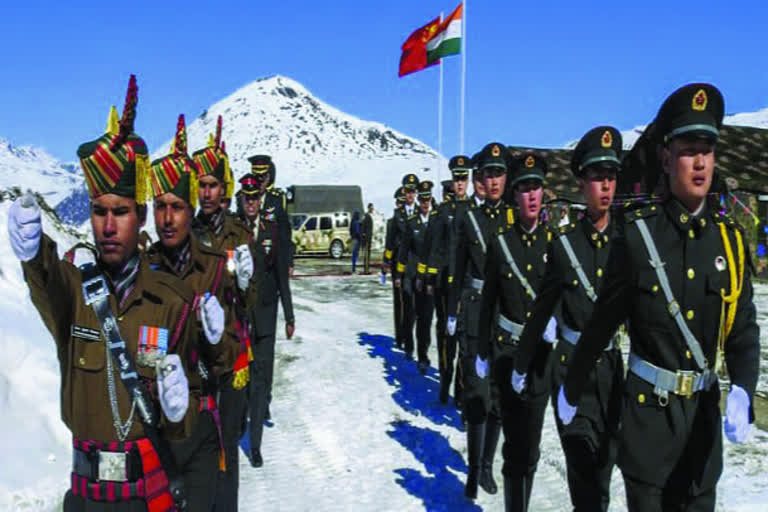New Delhi: Consequent to military and diplomatic negotiations between India and China at various levels, troops are being pulled back over the last couple of days from near 'eyeball-to-eyeball' situations at various points in Galwan Valley (Patrol Point 14), Pangong lake (Finger 4), Hot Springs (PP 15) and Gogra (PP 17) along the Line of Actual Control (LAC) in eastern Ladakh.
But these are understood to be ‘token movements’ so as to put in some distance between the troops of the world’s two biggest militaries that had an extremely violent and brutal physical fight on June 15 in Galwan Valley.
The June 15 fisticuffs led to at least 20 casualties in the Indian side and an unconfirmed number in the Chinese side. It was among a series of violent confrontations including one in the Pangong lake on May 5 and another on the May 9 in north Sikkim.
Underlining the fact that ‘disengagement and de-escalation’ may be still a far cry, an Army source told ETV-Bharat, “The present restriction (read ‘pullback’) mutually agreed by both sides is to avoid friction and violent incidents as tempers in both sides are high.”
The source added that the basic idea as of now is to “build trust” and that the pullback is to be followed by India-China militaries’ joint verification of the relocated camps.
Read: China confirms disengagement measures at Galwan region
With much more than 100,000 soldiers from both India and China, heavy guns and air force assets remaining in high alert along both sides of the LAC and nearby rear areas in rapidly-deployable positions, both militaries are also aware that while the process of restoring the status-quo to a pre-April situation will take time.
Also, the mobilization from both sides had taken a lot of effort including a process of ‘acclimatization’, large scale movement of soldiers and equipment, and setting up of logistics which is not possible to easily dismantle.
At the same time, the world’s two biggest armies do not have a longer window of time as in three months they will be against an extremely formidable winter in the icy heights.
Blinding heavy snow, temperatures about 40 degrees below zero, extremely chilly winds, and very inclement weather, but the most dangerous factor is the lack of oxygen—these are the adversaries that the two militaries in eastern Ladakh will have to face.
Read: Disengagement process between Indian, Chinese troops completes in Eastern Ladakh
Sparking off face-offs in summers is much easier at those altitudes, sustaining them over the long winter in such conditions is easier said than done. It also leads to war weariness because of the constant alert levels that have to be maintained during the long deployment,” a senior serving army officer who had served in the region said on condition of not being identified.
With altitudes ranging from 4,000-6,500 meters above sea level, this area extending right up to the Karakoram pass is just next to what would be the world’s highest battleground at Siachen.
With snow everywhere and not enough oxygen to breath, clinical depression is very common besides common ailments like extreme tiredness, lightheadedness, brain damage, swelling of the lungs, loss of hunger and insomnia.
Also Read: China pulls back troops, removes structures in Hot Springs, Gogra: Sources



